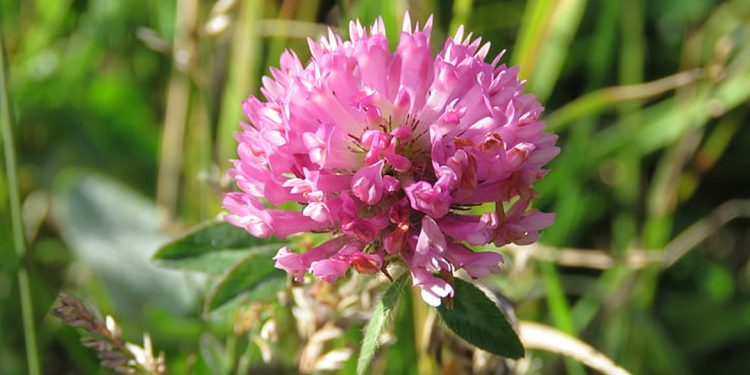A short-lived perennial, it is decumbent to erect, 20-60 cm (8 in-2 ft.) in height. The leaves are trifoliate and the flowers rose-purple to white.
History and traditions
Red clover has been an important agricultural and animal fodder crop since ancient times. But it was seldom used medicinally until its early introduction to the United States, where the Native Americans of the Unami and Ani-Stotini tribes discovered its therapeutic properties. They used it to treat cancerous tumors and skin complaints, took it during pregnancy and childbirth and as a general purification for bodily systems. As a result it was adopted by early settlers and found its way into British herbal medicine sometime during the 19th century.
Growth
It requires moist, well-drained soil and is propagated from seed.
Uses
Medicinal
Red clover blossoms are taken internally for skin complaints such as eczema and psoriasis, and applied externally for ulcers, sores and burns. Infusions were at one time thought to be helpful for bronchial complaints and the herb is also said to be effective in balancing blood sugar levels.










